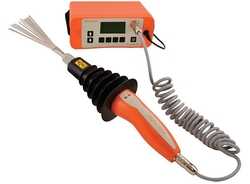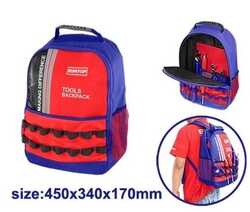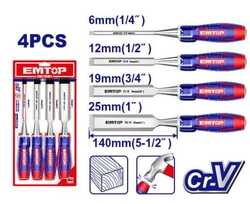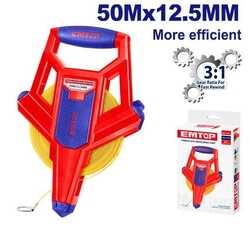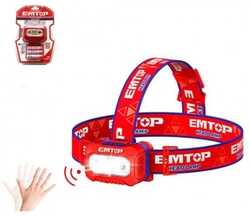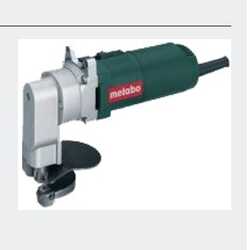Makita Export Division Uae: Adex International Llc

Makita Export Division Uae: Adex International Llc
<p style="margin-top:0cm;margin-right:0cm;margin-bottom:15.0pt;margin-left:<br>0cm;line-height:14.65pt"><span style="font-size:10.0pt;font-family:"Helvetica Neue";<br>color:#3D3D34">Makita Corporation is Japan's number one manufacturer and<br>exporter of electric power tools. The company develops, manufactures, and distributes<br>tools--more than 350 different products in all--in four areas. Makita's<br>portable general purpose tools group, which accounted for more than 52 percent<br>of 2003 revenues, encompasses drills, jackhammers, grinders, sanders,<br>screwdrivers, and other construction equipment. The portable woodworking tools<br>group includes saws, planers, routers, nailers, and other carpentry tools. It<br>generated about 19 percent of sales in 2003. Stationary woodworking machines,<br>including table saws, planer-joiners, and band saws, contributed just over 1<br>percent of sales. Though the company has traditionally targeted the<br>professional user, Makita's distinctive turquoise tools increasingly appeal to<br>the do-it-yourself market. Consumer tools include heavy-duty and household vacuums,<br>chain saws, brush cutters, hedge trimmers, and blowers. These, along with<br>industrial-use dust collectors and generators, made up around 11 percent of<br>annual revenues. Makita's parts and repair services were another important<br>business area, contributing more than 16 percent of revenues in 2003.<o:p></o:p></span></p><br><br><p style="margin: 0cm 0cm 15pt; line-height: 14.65pt;"><span style="font-size:10.0pt;font-family:"Helvetica Neue";<br>color:#3D3D34">Having launched multinational operations in 1970, Makita boasted<br>more than 100 sales offices and 39 overseas subsidiaries in the early 2000s,<br>selling its products in more than 100 countries around the world. Although<br>North America was its oldest market and generated 26 percent of sales in 2003,<br>Makita's largest foreign market was Europe, constituting just under 33 percent<br>of sales. Approximately 22 percent of revenues originated within Japan itself,<br>while Southeast Asia contributed almost 8 percent. Aiming to make its products<br>as close to its customers as possible, Makita manufactures its power tools and<br>other products at plants in Japan, Brazil, Canada, China, Germany, the United<br>Kingdom, and the United States.<o:p></o:p></span></p><br><br><p style="margin: 0cm 0cm 0.0001pt; line-height: 14.65pt;"><strong><span style="font-size:10.0pt;font-family:"Helvetica Neue";color:#3D3D34;border:none windowtext 1.0pt;<br>mso-border-alt:none windowtext 0cm;padding:0cm">20th-Century Foundation and<br>Development</span></strong><span style="font-size:10.0pt;font-family:"Helvetica Neue";<br>color:#3D3D34"><o:p></o:p></span></p><br><br><p style="margin: 0cm 0cm 15pt; line-height: 14.65pt;"><span style="font-size:10.0pt;font-family:"Helvetica Neue";<br>color:#3D3D34">The company traces its history to 1915 and the establishment of<br>Makita Electric Works, a repair shop for electric tools and equipment in<br>Nagoya, Japan, midway between Tokyo and Osaka. It was incorporated in 1938 as<br>Makita Electric Works, Ltd. In April 1945, near the end of World War II, the<br>plant was relocated to Sumiyoshi-cho in nearby Anjo City in an attempt to avoid<br>damage from air raids. The company has been located in Anjo ever since.<o:p></o:p></span></p><br><br><p style="margin: 0cm 0cm 15pt; line-height: 14.65pt;"><span style="font-size:10.0pt;font-family:"Helvetica Neue";<br>color:#3D3D34">But it was not until 1958 and the administration of President<br>Juiro Goto that the company diversified into the manufacture of electric power<br>tools. In January of that year, Makita began selling portable electric planers,<br>the first such product in Japan. A 1962 public stock offering raised funds for<br>the diversification program. By 1969--just over a decade later--Makita had<br>leapfrogged to the top of the Japanese power tool market. The company credited<br>its success in the domestic power tool market to high quality construction,<br>pioneering research and development, and a unique system of direct<br>distribution. Instead of relying on wholesalers to market its tools to<br>retailers, Makita employed its own direct sales force. The close relationships<br>engendered by this system gave the company insights into the needs of retailers<br>as well as the end user, thereby fueling innovation.<o:p></o:p></span></p><br><br><p style="margin: 0cm 0cm 15pt; line-height: 14.65pt;"><span style="font-size:10.0pt;font-family:"Helvetica Neue";<br>color:#3D3D34">With their brushed metal casings, the company's earliest tools<br>looked bulky, heavy, and primitive by today's standards. Over the years, Makita<br>traded metal casings for shock-resistant, turquoise plastic; added multi-speed<br>motors and electronic controls; and developed a mind-numbing variety of<br>accessories. Makita targeted professional tool users in the carpentry,<br>construction, timber, and masonry trades with its powerful, durable equipment<br>that often cost two to three times as much as a typical tool made for the<br>consumer market. Focusing on the high end of the power tool industry mitigated<br>price competition, thereby boosting profit margins substantially.<o:p></o:p></span></p><br><br><p style="margin: 0cm 0cm 0.0001pt; line-height: 14.65pt;"><strong><span style="font-size:10.0pt;font-family:"Helvetica Neue";color:#3D3D34;border:none windowtext 1.0pt;<br>mso-border-alt:none windowtext 0cm;padding:0cm">Overseas Expansion Beginning in<br>1970s</span></strong><span style="font-size:10.0pt;font-family:"Helvetica Neue";<br>color:#3D3D34"><o:p></o:p></span></p><br><br><p style="margin: 0cm 0cm 15pt; line-height: 14.65pt;"><span style="font-size:10.0pt;font-family:"Helvetica Neue";<br>color:#3D3D34">Realizing the limitations of the domestic market, Goto sought<br>global expansion in the 1970s. Stock offerings in 1968 and 1970 generated a<br>"war chest" that financed Makita's overseas campaign. The company<br>employed a multinationalist strategy, establishing a new subsidiary in each<br>target market. Makita set up a foothold in the United States first, in 1970.<br>Within just four years, the company had operations in France, the United<br>Kingdom, Australia, Canada, the Netherlands, and Italy. The late 1970s and<br>early 1980s witnessed the creation of subsidiaries in Germany, Belgium, Brazil,<br>Austria, and Singapore.<o:p></o:p></span></p><br><br><p style="margin: 0cm 0cm 0.0001pt; line-height: 14.65pt;"><span style="font-size:10.0pt;font-family:"Helvetica Neue";color:#3D3D34">Makita used<br>its comparatively low-cost production base to advantage in Europe and the<br>United States. By the end of the 1970s, the company had captured almost one-fifth<br>of the global professional tool market, nearly matching Black & Decker<br>Corporation's market share. As an unidentified analyst told<span class="apple-converted-space"><i><span style="border:none windowtext 1.0pt;<br>mso-border-alt:none windowtext 0cm;padding:0cm"> </span></i></span></span><em><span style="font-size:10.0pt;font-family:"Helvetica Neue";mso-fareast-font-family:<br>Calibri;mso-fareast-theme-font:minor-latin;color:#3D3D34;border:none windowtext 1.0pt;<br>mso-border-alt:none windowtext 0cm;padding:0cm">Fortune</span></em><span style="font-size:10.0pt;font-family:"Helvetica Neue";color:#3D3D34">'s Bill<br>Sapirito in 1984, "Basically, Makita had them by the you-know-whats and<br>just said, 'Cough.'"<o:p></o:p></span></p><br><br><p style="margin: 0cm 0cm 15pt; line-height: 14.65pt;"><span style="font-size:10.0pt;font-family:"Helvetica Neue";<br>color:#3D3D34">By this time, competition between Makita and U.S. industry<br>leader Black & Decker had saturated that country's market for power tools<br>to the point that sales growth appeared limited to replacements, parts, and<br>trade-ups. In fact, manufacturer's sales slid 16 percent from 1980 to 1983.<br>Fortunately, the development of cordless rechargeable power tools established a<br>whole new avenue of growth. After ten years of research and development, Makita<br>launched its first cordless tool, a drill, in 1978. Eliminating the cord freed<br>the worker from the power source, but early cordless models had several<br>limitations. They were often heavier and less powerful than their corded<br>forebears, had very limited running time, and required long periods to<br>recharge. Though these factors kept cordless tools out of many professionals'<br>tool chests, they did appeal to the home handyman whose projects were less<br>demanding. Improvements in battery technology throughout the late 20th century<br>boosted power and running time while reducing recharging time. By the late<br>1980s, Makita's 9.6-volt family of cordless tools was beginning to find their<br>way onto construction sites.<o:p></o:p></span></p><br><br><div style="mso-element:para-border-div;border:none;border-bottom:solid #44929E 1.5pt;<br>padding:0cm 0cm 0cm 0cm;background:white"><br><br><h1 style="margin: 0cm 0cm 7.5pt; line-height: 27pt; border: none; padding: 0cm; background-image: initial; background-attachment: initial; background-size: initial; background-origin: initial; background-clip: initial; background-position: initial; background-repeat: initial;"><span style="font-size:27.0pt;<br>font-family:"Verdana","sans-serif";color:#44929E;font-weight:normal">Power<br>Tools<o:p></o:p></span></h1><br><br></div><br><br><p class="MsoNormal" style="margin-top:7.5pt;line-height:18.0pt;background:white"><span style="font-size:11.5pt;font-family:"Verdana","sans-serif";color:#555555"><a href=" title="Mobile" style="transition: all 0.2s ease-out;-webkit-tap-highlight-color: rgba(68, 146, 158, 0.498039);<br>display:inline-block"><span style="font-family:"Calibri","sans-serif";<br>mso-ascii-theme-font:minor-latin;mso-hansi-theme-font:minor-latin;mso-bidi-font-family:<br>Arial;mso-bidi-theme-font:minor-bidi;color:#44929E;border:solid #44929E 1.0pt;<br>mso-border-alt:solid #44929E .75pt;padding:0cm;background:#44929E;text-decoration:<br>none;text-underline:none"><o:p></o:p></span></a></span></p><br><br><p class="MsoNormal" align="center" style="margin-top:7.5pt;text-align:center;<br>line-height:18.0pt;background:white"><span style="border:solid #44929E 1.0pt;<br>mso-border-alt:solid #44929E .75pt;padding:0cm;background:#44929E"><a href=" title="Mobile"><span style="color:windowtext;text-decoration:none;text-underline:none"><span style="font-size:11.5pt;font-family:"Verdana","sans-serif";color:#44929E;<br>mso-no-proof:yes"><!--[if gte vml 1]><v:shapetype id="_x0000_t75" coordsize=&







